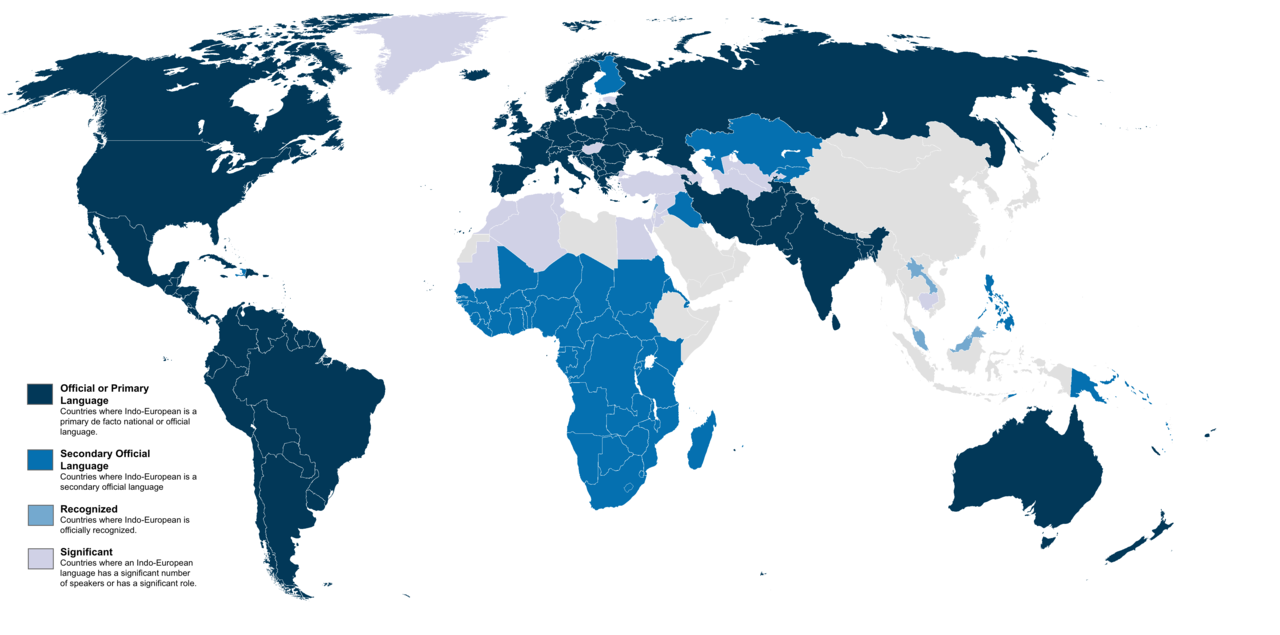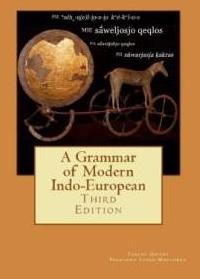Indo-European languages
Indo-European languages are the most widely used language family in the world. One of the languages, English, is the second language of choice of many people. Below is a map showing countries where it is the primary language in dark blue and countries where it is the secondary or officially recognized language in lighter blue.

Below is a more detailed description of the language by Wikipedia:
"The Indo-European languages are a language family native to western and southern Eurasia. It comprises most of the languages of Europe together with those of the northern Indian subcontinent and the Iranian Plateau. Some European languages of this family, such as English, French, Portuguese, Russian, Danish, Dutch, and Spanish, have expanded through colonialism in the modern period and are now spoken across several continents. The Indo-European family is divided into several branches or sub-families, of which there are eight groups with languages still alive today: Albanian, Armenian, Balto-Slavic, Celtic, Germanic, Hellenic, Indo-Iranian, and Italic; and another six subdivisions which are now extinct.
Today, the most populous individual languages are English, Hindustani, Spanish, Bengali, French, Russian, Portuguese, German, Persian and Punjabi, each with over 100 million native speakers. However, many other Indo-European languages are small and in danger of extinction: Cornish, for instance, has fewer than 600 speakers.
In total, 46 percent of the world's population (3.2 billion) speaks an Indo-European language as a first language, by far the highest of any language family. There are about 445 living Indo-European languages, according to the estimate by Ethnologue, with over two-thirds (313) of them belonging to the Indo-Iranian branch.
All Indo-European languages are descended from a single prehistoric language, reconstructed as Proto-Indo-European, spoken sometime in the Neolithic era. Its precise geographical location, the Indo-European urheimat, is unknown and has been the object of many competing hypotheses; the most widely accepted is the Kurgan hypothesis, which posits the urheimat to be the Pontic–Caspian steppe, associated with the Yamnaya culture around 3000 BC. By the time the first written records appeared, Indo-European had already evolved into numerous languages spoken across much of Europe and south-west Asia. Written evidence of Indo-European appeared during the Bronze Age in the form of Mycenaean Greek and the Anatolian languages, Hittite and Luwian. The oldest records are isolated Hittite words and names – interspersed in texts that are otherwise in the unrelated Old Assyrian Akkadian language, a Semitic language – found in the texts of the Assyrian colony of Kültepe in eastern Anatolia in the 20th century BC. Although no older written records of the original Proto-Indo-Europeans remain, some aspects of their culture and religion can be reconstructed from later evidence in the daughter cultures. The Indo-European family is significant to the field of historical linguistics as it possesses the second-longest recorded history of any known family, after the Afroasiatic family in the form of the Egyptian language and the Semitic languages. The analysis of the family relationships between the Indo-European languages, and the reconstruction of their common source, was central to the development of the methodology of historical linguistics as an academic discipline in the 19th century.
The Indo-European family is not known to be linked to any other language family through any more distant genetic relationship, although several disputed proposals to that effect have been made.
During the nineteenth century, the linguistic concept of Indo-European languages was frequently used interchangeably with the racial concepts of Aryan and Japhetite."
(from Wikipedia; accessed 2021)
A Grammar of Modern Indo-European (Quiles, et al.) 